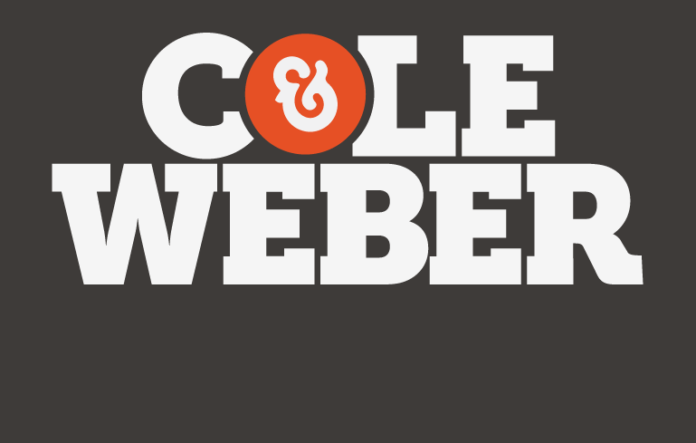By Larry Coffman
The devouring of venerable Cole & Weber (Seattle’s first ad agency, circa 1931) in the WPP maw is the proverbial “last straw” in the passing of the Seattle advertising community’s Old Order. But this is not a plaint about change. Rather, it’s an analysis of the factors that have moved the local advertising business from the Old Order to the New (The “Ad-volution”).
If MARKETING is, indeed, considered the “Voice of the Marcomm Community in Seattle,” then it’s incumbent upon us to categorize and comment in-depth on the sea change in the core of that community. In doing so, we’ve enlisted the aid of members of the MARKETING IMMORTALS pantheon to verify the accuracy of our analysis and the completeness and correctness of the Old Order listees and to offer the comments that will appear in subsequent posts.
Analysis
Three decades ago, the differences among the Big Three (advertising, design and public relations) marcomm practitioners was clearly distinguishable. In fact, for more than three decades, these were the first three categories in the annual MARKETING ATLAS. However, in the 2019 MARKETING LINK, successor to the ATLAS, the three had become so homogenized that they were listed under the single heading of Creative Services.
How did this happen in the relatively short span of 30 years? I believe there were six key factors:
- The advent of the “virtual agency” in the early ’80s, championed locally by Mike Mogelgaard, created a large pool of marcomm freelancers willing to sell their services to the highest bidder. [An even earlier version of the virtual agency was Steve Darland’s Consortium, which handled only public-sector and nonprofit clients and did several memorable campaigns for Metro Transit in the early ’80s, when I was the marketing manager there.];
- As the marketing-revenue “pie” became smaller—especially during the Great Downturn that began in 2008—ad, design and PR agencies began using freelancers to become “full-service” agencies, which was a giant leap forward in the homogenization of the “Big Three;”
- The homogenization was further abetted by the rise of the more general term of “branding” to describe the services these reconfigured agencies—reinforced by freelancers to provide capabilities beyond their core competence—could offer;
- Corporate clients also began hiring these freelancers to gain in-house marketing and creative (branding) capabilities, further shrinking the marketing-revenue “pie” and reinforcing the need for agencies to be “all things to all people,” in order to survive;
- The all-encompassing (and lucrative) Agency of Record (AOR) model that reigned from the ’90s until recent years gave way to corporate clients handing out assignments on a more limited (and less lucrative) project-by-project basis; and
- The 800-pound gorilla, of course, that helped accelerate the “ad-volution” was the Internet-enabled digital revolution. First, it added a critical component to the new model of a relatively lean core team, complemented by freelancers (i.e., those savvy in new media). And, second, it spawned a host of small new-media shops—some very short-lived.
The Plus: The Internet and the smartphone decimated the professional photography business, and the images available on the Internet, through crowd-sourcing and stock art, has severely wounded the graphic-design business. And personal and phone interviews have given way almost entirely to online surveys in the research area.
Ironically, the 30 years of MARKETING newspaper’s existence (1987-2017) perfectly mirrors the period of decline—from halcyon to hellish—in the other major marcomm fields, namely printing, publishing and radio/television. Besides the Internet, consolidation has been the other major change agent, as large out-of-market corporations have acquired formerly independent local companies (i.e., the WPPs, RR Donnelleys and Sinclairs of the world).
Below is a listing of the advertising, design and PR agencies, all independents, that existed in the halcyon days of the ’90s in Seattle (the Old Order). This will be followed next week by the New Order (the bulk of whom are from the latest PSBJ Book of Lists). Several are owned by one of the four major holding companies—among which WPP ranks third, behind Publicis Groupe and Omnicom, and ahead of Interpublic Group. Contact larrycoffman@frontier.com if you have any additions or corrections.
Advertising
- Borders Perrin & Norrander
- BrandQuery
- Brems Eastman Glade
- Brown&HadleyAndPartners
- Chiat-Day
- Cole & Weber
- Digital Kitchen
- Ehrig & Associates
- Elgin Syferd/DDB Needham
- Evans/Kraft
- Graf Hanson Hoke
- The Hatchery
- Hinton & Steel Advertising
- Ilium Associates
- Jacobson Ray McLaughlin Fillips
- Kobasic, Fine & Associates
- KSL Media West
- Livingston+Co.
- George Lowe Advertising
- McCann-Erickson
- McMath & Gross
- Mogelgaard & Associates
- Stanton & Everybody
- Williams-Helde Advertising
- WONGDOODY
Public Relations
- The Bean Agency
- Communication Northwest
- DeLaunay Communications
- The Frause Group
- Gogerty & Stark
- Janzen & Associates
- LaBrue Communications
- Northwest Strategies
- Ogilvy & Match West
- PhinneyBischoff
- The Rockey Co.
- Sharp Hartwig
- Travers Associates
Design
- 8613 AD
- Bannerworks
- Belyea
- Carey & Associates
- Digital Kitchen
- Farin Design Group
- Tim Girvin Design
- Gravity Design
- Hammerquist Studios
- Hansen Design Co.
- Hilliard-Tonkin
- Hornall Anderson Design Works
- The Leonhardt Group
- Methodologie
- Spangler Associates
To Come: The New Order; Comments







Challenging to read, for the truth if it all. Given our smaller market, we crossed over much earlier. I believe clients were better and more consistently served under the older model. However, change is imminent and there has been a lot of good as well. We just need to evolve in a way that keeps us both true to our beliefs and creates value for our clients. If we are open to it, there is always a way. Unfortunately, it can’t be done comfortably.
Well done Larry, Keep on Keep’in on buddy….
Comments are closed.